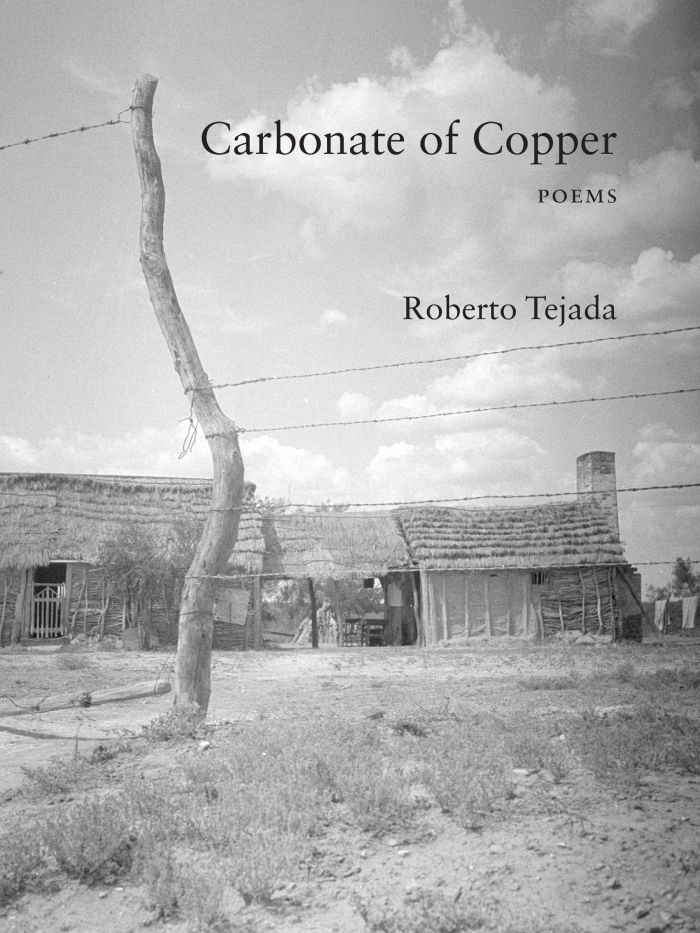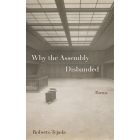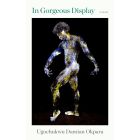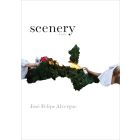Carbonate of Copper

This book can be opened with

Bringing together lyric poetry, documentary photographs, and lives lived along the U.S.-Mexico borderland
Written during extended periods in Brownsville, McAllen, and Marfa, Texas, in Carbonate of Copper Roberto Tejada gives voice to unsettled stories from the past, as well as to present-day experiences of custody and displacement. The poems stage scenes adjacent to the U.S.-Mexico border and to the realities of migration warped by jarring political vitriol, bearing witness to past and present-day hazards and sorrows wagered by those in search of asylum. So enabled, these poems make visible not only the infrastructure of militarized surveillance and its detention complex but also the aspiration to justice and mercy and the resilient self-organized order of time for migrants seeking human dignity while awaiting passage to the other side of the dividing line.
The book’s title refers also to a mineral found in azurite and malachite, a color medium that had an impact on art during the first phase of globalization, the ensuing colonial enterprise, and its systems of extraction. Carbonate of copper was less desirable than the deeper ultramarine made from ground lapis lazuli, but Renaissance artists and patrons nonetheless coveted it and prompted a market for the blue derivative used in tempera and oil pigment. The blue powder pigment serves, too, as a form of sorcery: one that would ward off those who deal in injury of the already dispossessed.
Turning his attention to the forced relocation of peoples, the COVID-19 death toll, the encroaching dangers of illiberal rule, the meanings of home and eviction, the power of cultural memory, as well as his artistic forebears, Tejada accounts for the uncounted and those excluded from belonging in voices that tell the cruel fortunes and joyful vitality of human and non-human life forms.
The section titles of Tejada’s intense, harrowing new book are derived from place names, as though the poems marked some sort of periplus, an account of a journey. And indeed, Tejada initiates a journey that begins in the familial and radiates into a world of 'missing through-lines,' surveilled borders, of sequestrations and dispossessions. Perhaps more significantly, it is the kaleidoscopic originality of Tejada’s language, its at once precise and vividly sensual chthonic glow, that lights the way for the reader’s own journey by insistently 'propelling forward a hope.'—Forrest Gander, author of Mojave Ghost
Tejada’s Carbonate of Copper is valuable and needed, moving from place to perception to meditation, placing meaning and me-ness into a mediated space. His is a poetics of environment creation, where poems are molecular structures, made of the imagination, with an intent of mutual transfiguration.—Hoa Nguyen, author of A Thousand Times You Lose Your Treasure
1. Desierto de Chihuahua
Hangman | 3
Macula | 5
Night Festival | 7
January Song | 10
2. Orphan Hill, Presidio County
Lung Compliance | 15
Litany | 17
Remainder | 19
Ordinance | 21
Speaking Part | 23
Citizen | 25
Witness | 26
Grassland | 28
Vehicle | 31
Immune | 33
Residence | 35
Grayscale | 36
In Person | 38
3. Milestone Obelisk
Carbonate of Copper | 43
Impasse | 45
Anyway | 47
Oxygen | 50
Palisade | 52
September | 54
Congregation | 56
Chanting | 58
Throne | 60
February Sketchbook | 63
4. Sign for Bridge
Fable | 67
5. Bicentennial Boulevard
Field Guide | 85
Pathway | 88
Swerve | 90
Time to Wake Michael | 92
Time Insufficient | 95
Wind | 97
Messenger | 99
Warning | 100
Tunnel | 102
Touchstone | 105
Season | 108
6. Puente Brownsville–Matamoros
Cover | 113
Room | 115
Facsimile | 117
Thread Time | 119
Embargo | 120
Entrance | 122
Legion | 126
Oblation | 128
Particle | 131
Renegade | 134
Scorpion | 136
Birthright | 138
Song | 139
The Color | 141
List of Figures | 143
Postscript | 145
Notes | 147
Acknowledgments | 149




